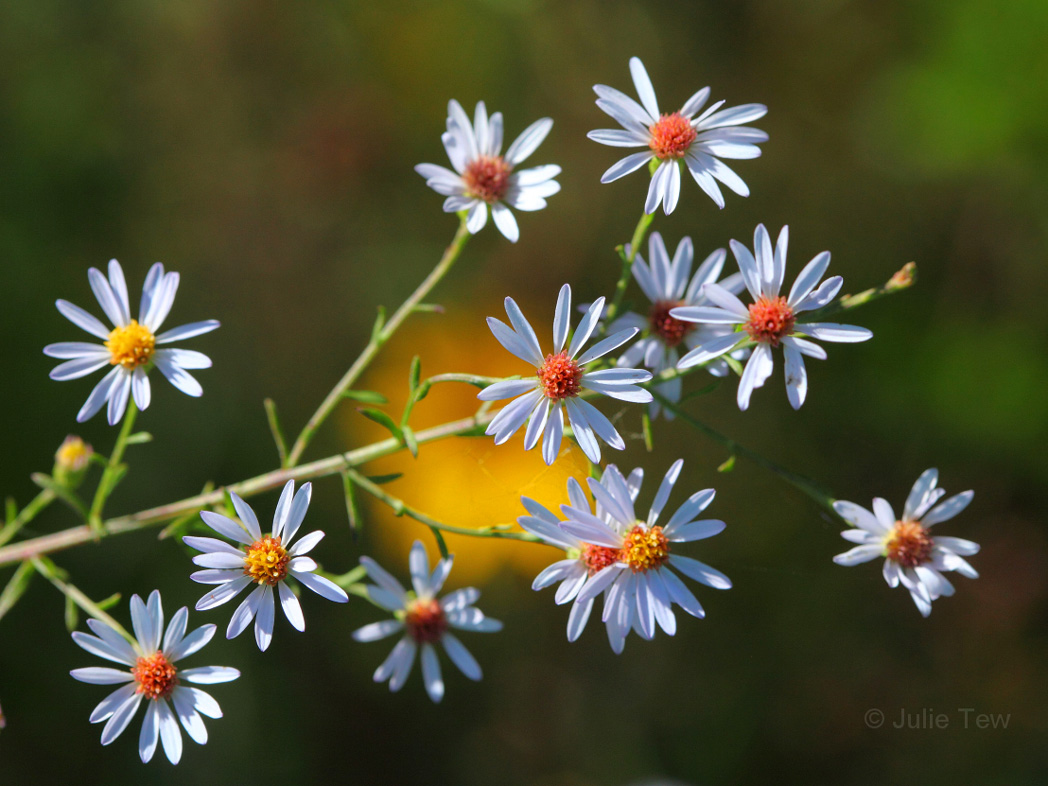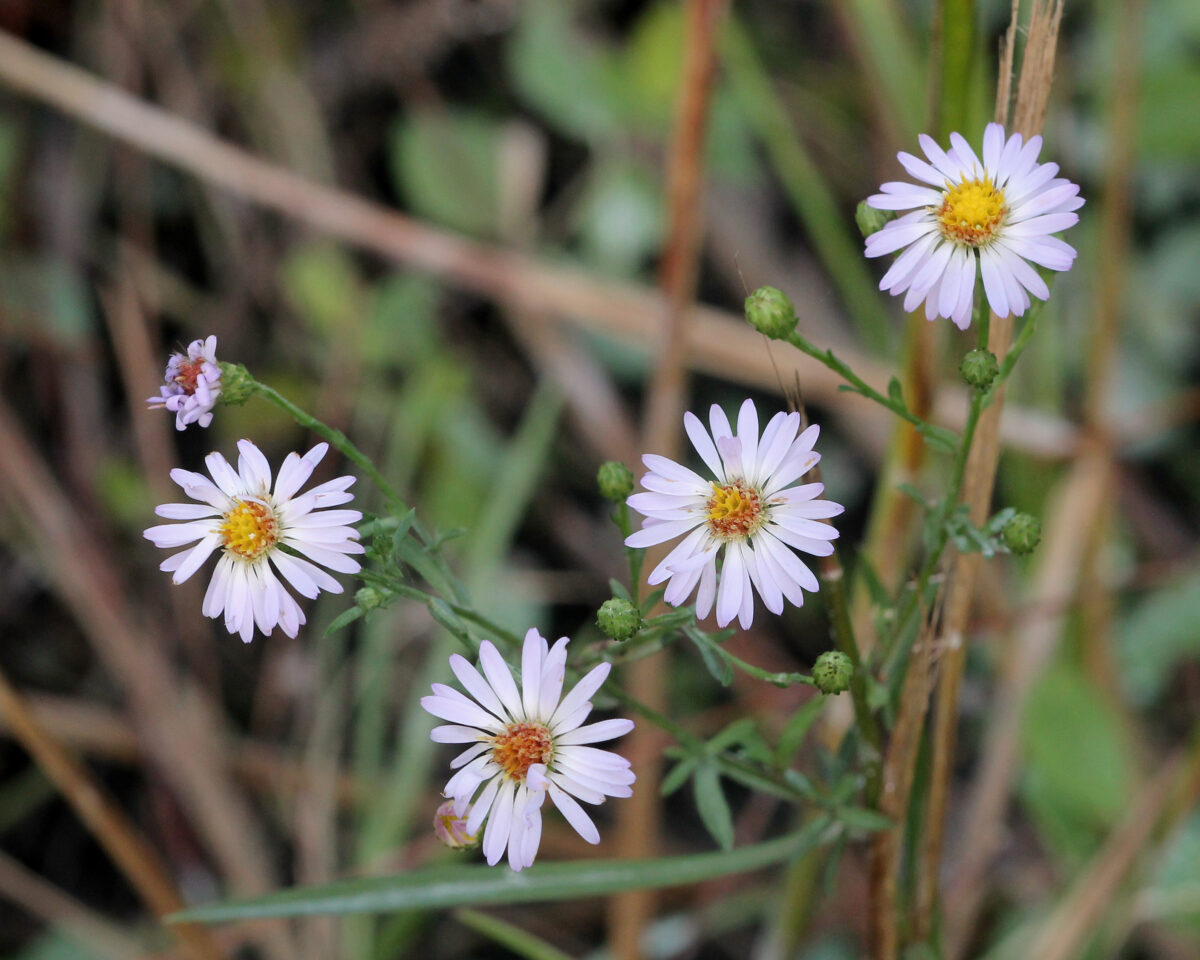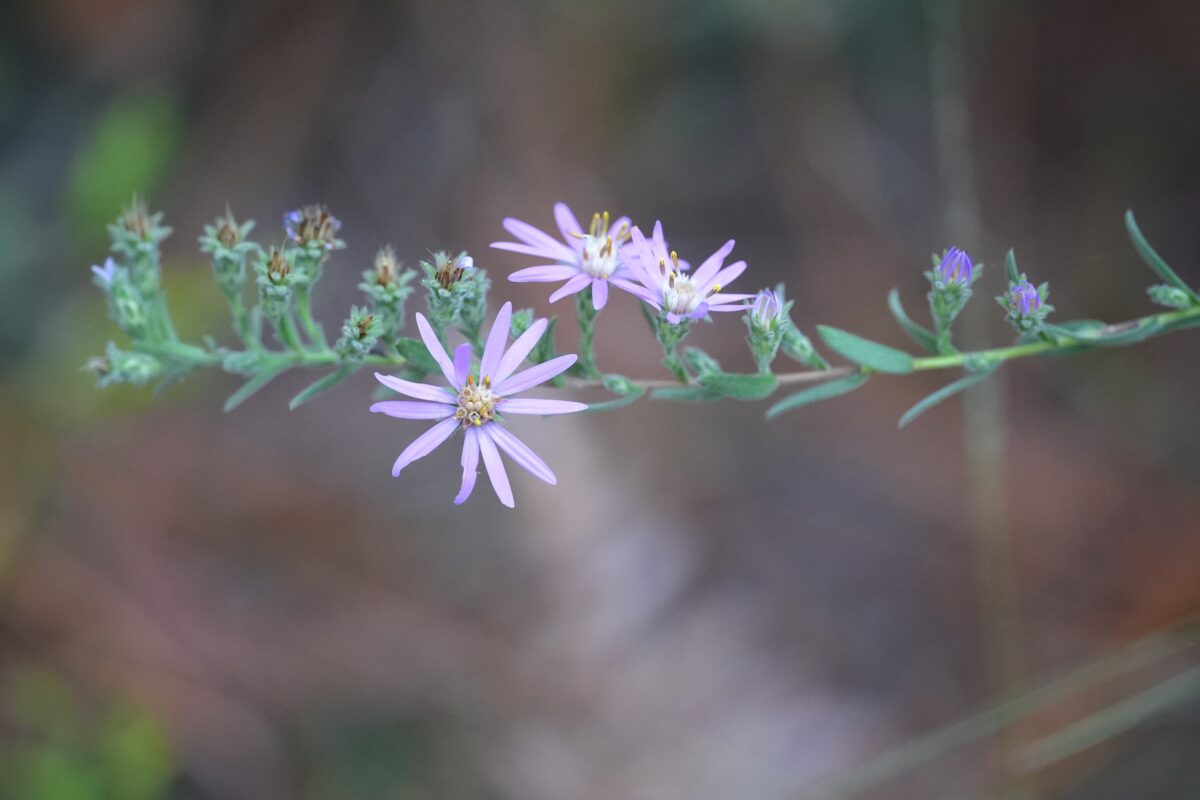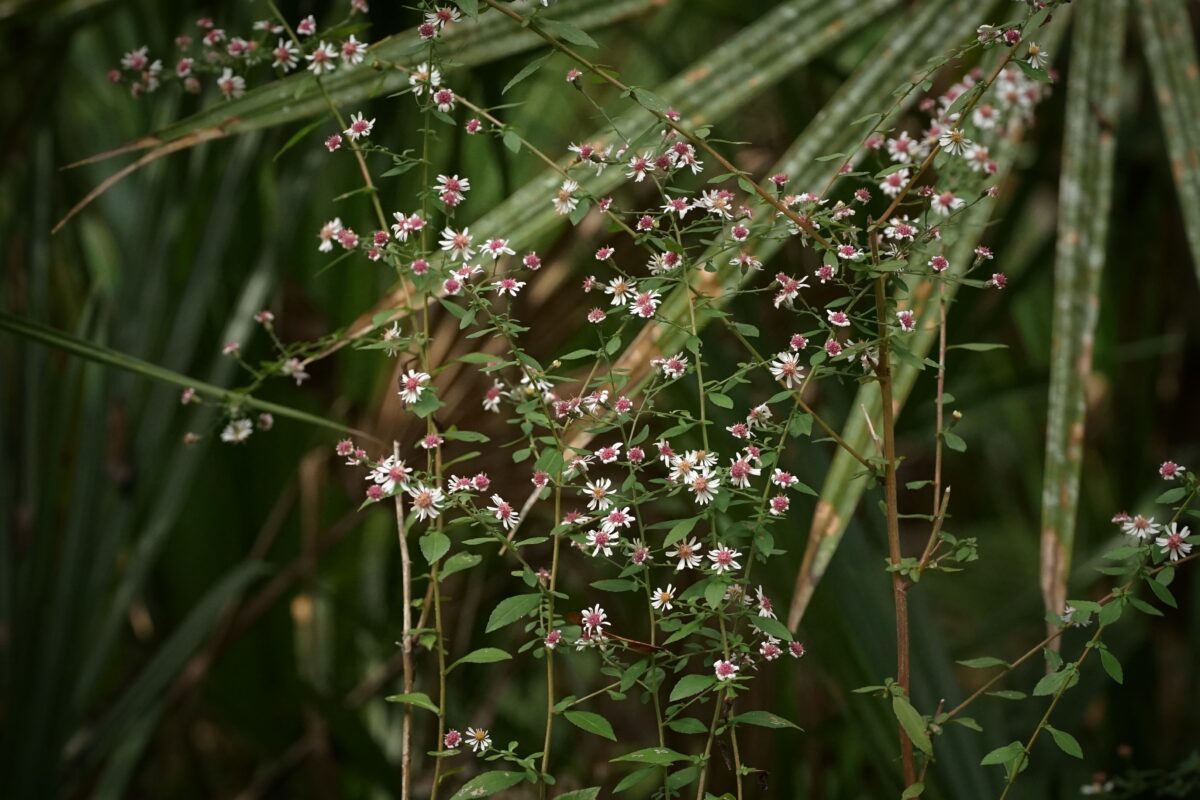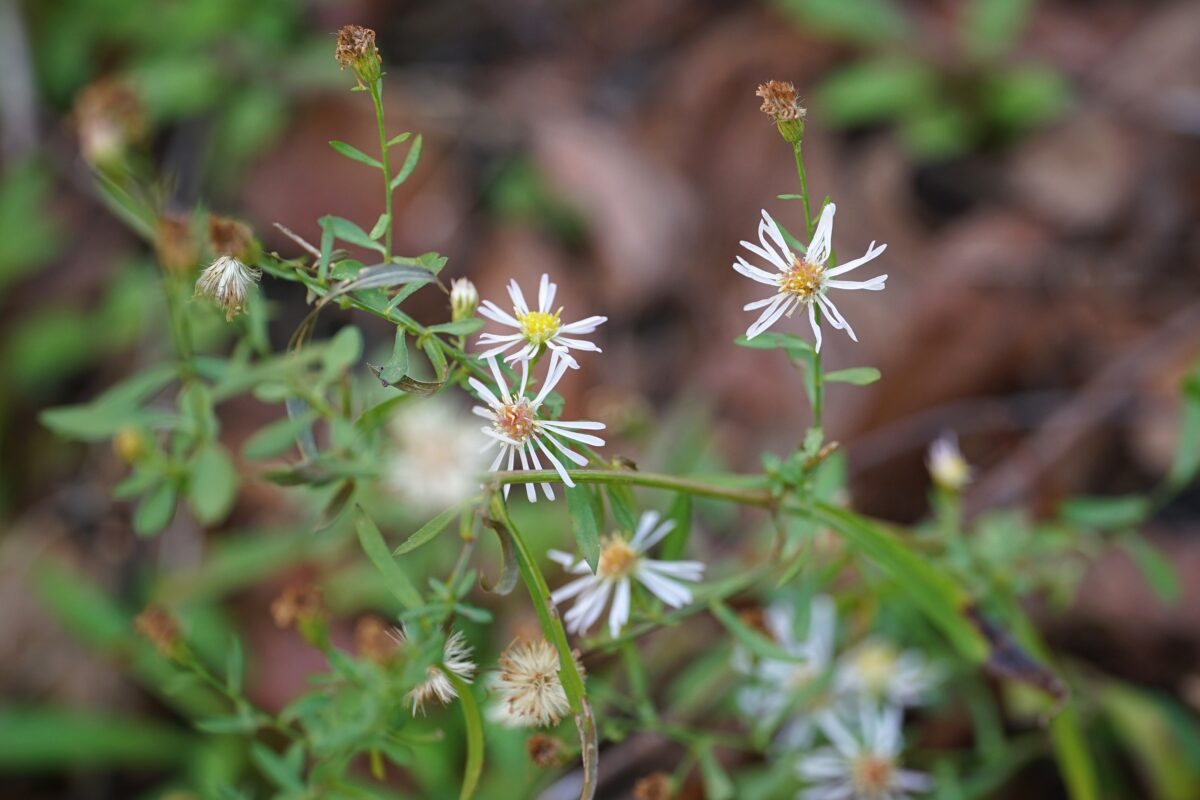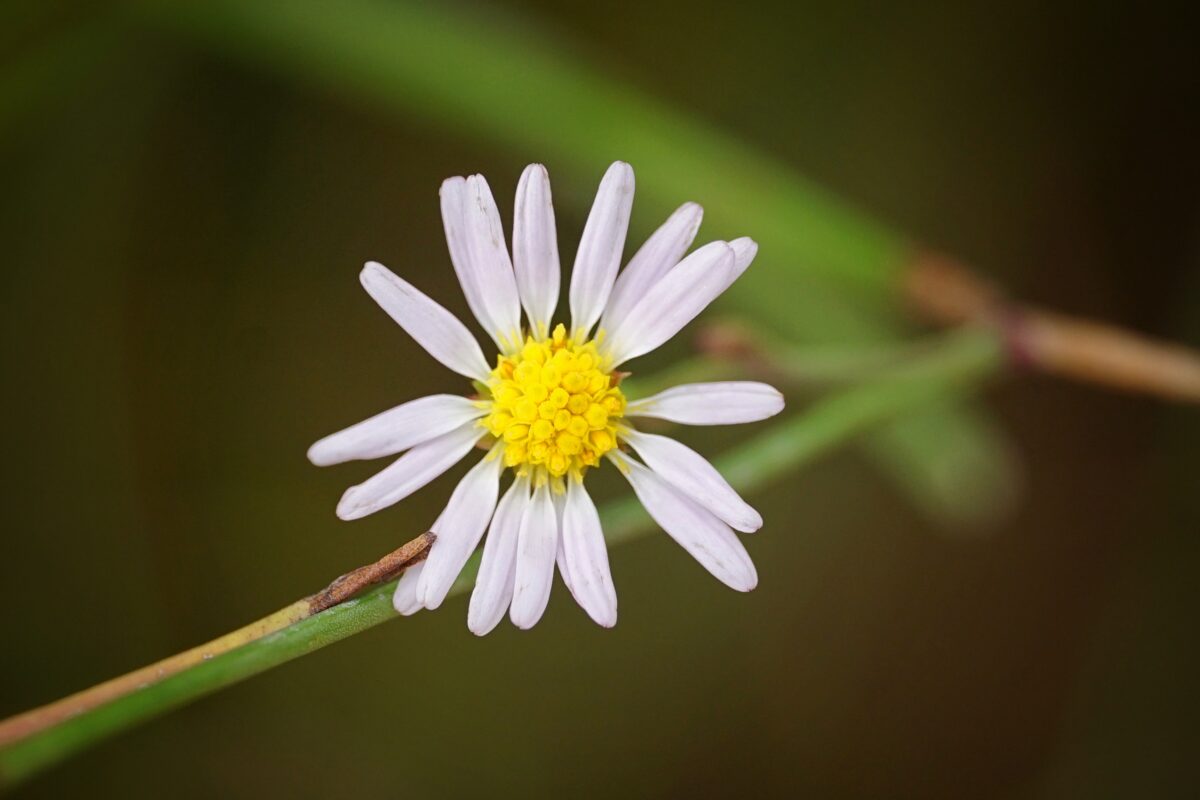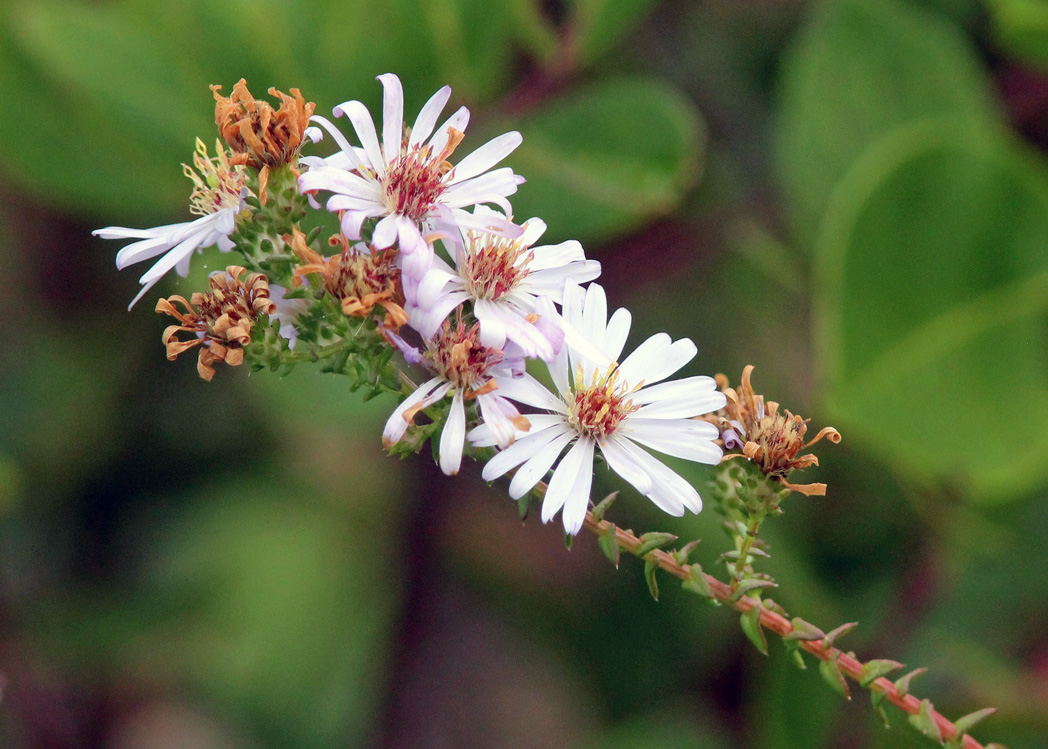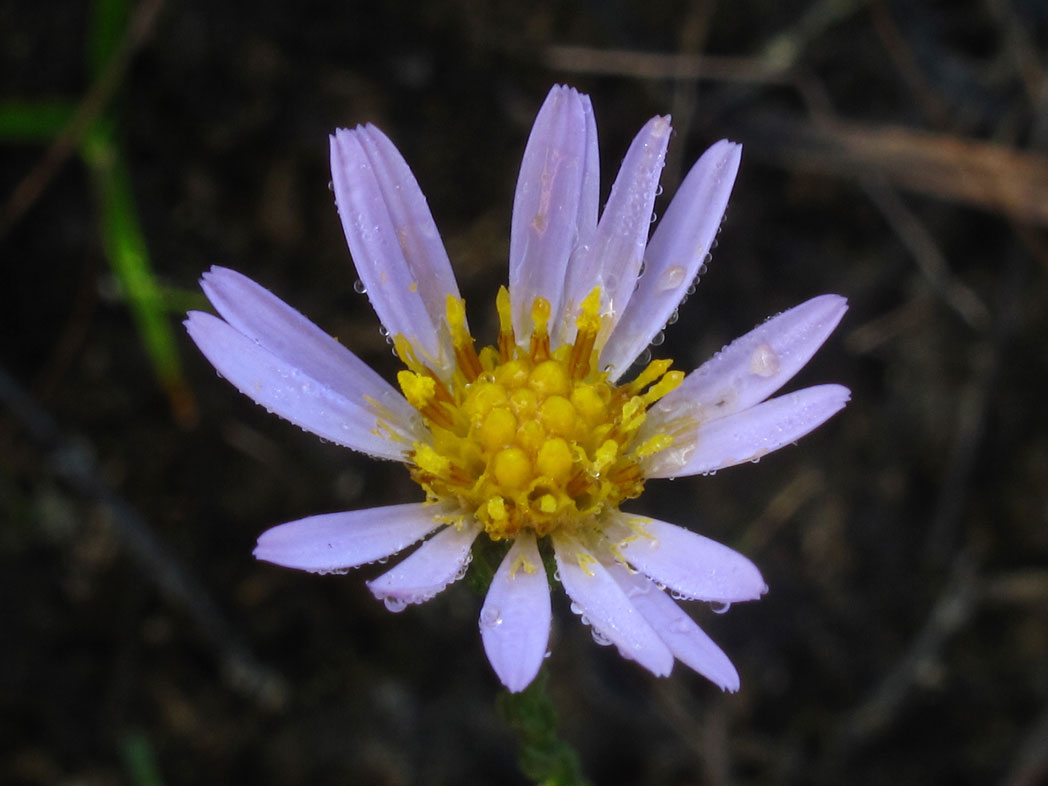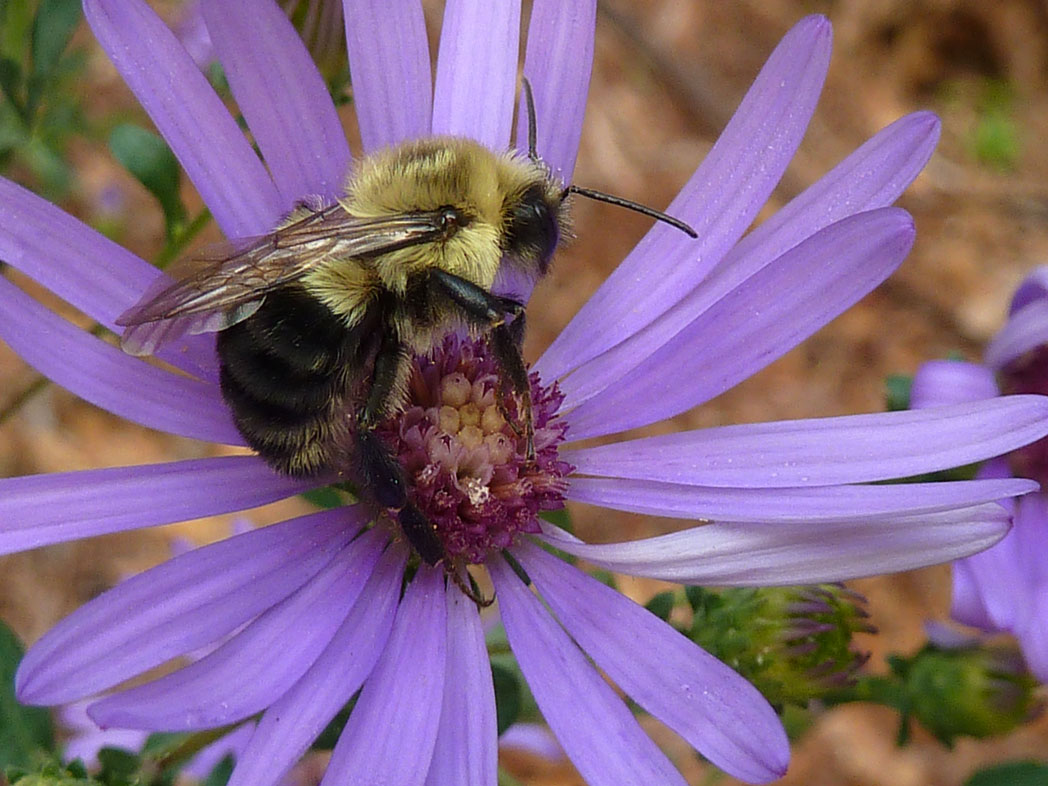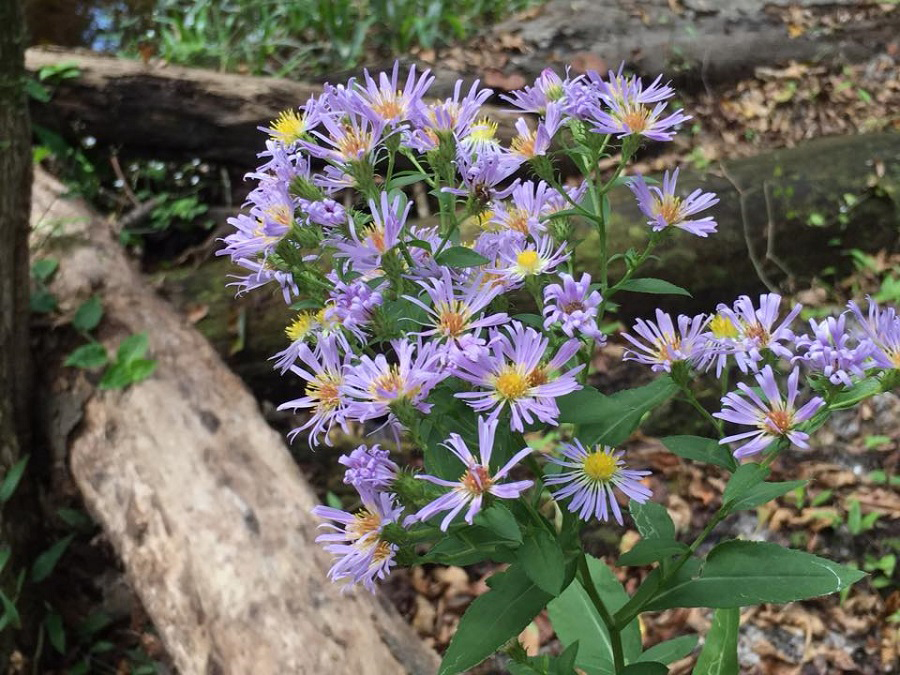Rice button aster
Pictured above: Rice button aster (Symphyotrichum dumosum) by Julie Tew. Click on terms for botanical definitions. View post as a PDF.
Also known as Bushy aster, Rice button aster (Symphyotrichum dumosum) is a perennial herbaceous wildflower. Like other Symphyotrichum species, it is a profuse bloomer. Its flowers are small (3/8- to 3/4-inch in diameter) and borne in terminal panicles. Ray florets vary in color from white to pink to lavender. Disk florets are yellow to reddish and may fade as the flower ages. Bracts are smooth and whitish. Leaves are linear, sessile and alternately arranged. Stems are slim and branched.
Rice button aster occurs naturally in sandhills, pine flatwoods and hammocks. It blooms primarily in September through December, although it has been known to bloom throughout the year. Rice button aster attracts many pollinators, particularly butterflies and native bees. The plant is a larval host for the Pearl crescent butterfly.
Members of the Symphyotrichum genus were once classified in the genus Aster, which contained over 600 species. All have since been reclassified into 10 different genera. The genus name Symphyotrichum is from the Greek sýmphysis, meaning “growing together,” and thríx, or “hair.” It refers to a basal ring of hairs or bristles (pappi) thought to occur on New England aster (Aster novi-belgii, now Symphyotrichum novi-belgii); however, this characteristic is absent in most modern Symphyotrichum species.
Family: Asteraceae (Aster, daisy or composite family)
Native range: Throughout Florida
To see where natural populations of Rice button aster have been vouchered, visit florida.plantatlas.usf.edu/.
Soil: Moderately moist to dry sandy acidic soils
Exposure: Full sun to partial shade
Growth habit: 2–3+’ tall
Propagation: Seed
Florida regions of landscape suitability: North, Central, South
Garden tips: Rice button aster is easy to propagate and adaptable to a variety of growing conditions, making it an ideal plant for the home landscape. It does best in mixed wildflower plantings. Rice button aster spreads by suckering and may require some thinning to keep it under control.
Plants are often available from nurseries that specialize in Florida native plants. Visit PlantRealFlorida.org to find a nursery in your area.
Learn more about Rice button aster from the Florida Native Plant Society and the Institute for Regional Conservation.
For information on other Symphyotrichum species, see these resources:

